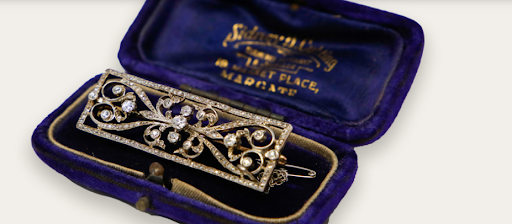How to tell if your antique jewellery is real
Have you recently inherited some vintage or antique jewellery? Or, perhaps you’re looking at purchasing a piece. If you’re not an expert, it can be hard to tell if the jewellery in question is genuine or if it is an imitation.
We’ve put together some simple steps that you can do at home to tell if your jewellery is a genuine antique or not.
What is antique and vintage jewellery?
Vintage jewellery is jewellery that is at least 30 years old. Antique jewellry on the other hand, must be older than a century. This means that there are many different types of vintage and antique jewellery based on fashion trends of the era, manufacturing styles, popular materials, and jewellery hallmarks.
Here at four identification markers to look out for.
1. The jewellery style
One of the most telling ways to identify your jewellery is by its style. This can correspond to a specific time period or area. Here’s a brief breakdown of the most popular jewellery styles by era:
Georgian (1700-1830):
The Georgian style is one of the oldest and still commercially available styles of jewellery. It is named so after the four kings that ruled England during this period of time and is known for the elaborate designs, bold colours, use of gemstones and love of yellow gold.
Victorian (1830-1900):
The Victorian style of jewellery is highly personal to the late Queen Victoria, who was a style-setting icon of her time. During the first years of her marriage, a snake ring that was given to her by her husband, Prince Albert, became wildly popular. Following his death, the public joined her method of mourning by wearing black jewellery. This was often set with jet, onyx, and other somber gems such as garnets.
Edwardian (1900-1910):
The Edwardian period of jewellery carries on a lot of the Victorian era’s femininity with lacy and floral designs, but with a more simple touch. A lot of this jewellery includes white gold and platinum, as well as garland designs that incorporate bows and leaves.
Art Nouveau: (1890-1910):
Overlapping the Victorian and Edwardian styles, Art Nouveau jewellery is a very distinctive style that’s characterised by nature-inspired designs and smooth, sweeping curves. During this time, the colours used are more muted and natural, including soft stones such as amber, opal and moonstone.
Art Deco (1915-1935):
Art Deco pieces were bold and modern, to reflect the growing flapper power of the day. This style combines sharp, geometric shapes with bright gemstones like sapphires, rubies, and emeralds- think Great Gatsby!
Retro (1930-1940):
The Retro jewellery style emerged during the war when materials were scarce. As a result, synthetic and inexpensive materials became popular, such as plastic, rhinestones, and glass. This gave birth to costume jewellery, which was made popular by hi-end designers.
Southwestern:
Inspired and produced by Native American artisans and silversmiths, these designs are usually made out of sterling silver or leather. They are often found in colours such as turquoise, coral, and mother-of-pearl. This style of jewellery is also found with patterns including feathers and other indigenous art inspiration.
Black Hills:
Originating from the gold rush in South Dakota, Black Hills gold has a unique look due to its usage of different gold colors, including yellow, pink, and green. In order for an item to be called Black Hills gold, it must be manufactured in South Dakota.
2. Take note of the manufacturing methods
Manufacturing methods of jewellery dramatically vary depending on the time period and this makes it an easy way to identify what era your jewellery is from. For instance, 1900s jewellery commonly has engraving on it, where intricate, lacy work is often found in Edwardian jewellery.
Additionally, countries have different standards for their metals as well, which will allow you to figure out where your item is from.
3. Look for hallmarks
Stamps or hallmarks on the piece often help determine an item’s origins, or even the year it was made. These hallmarks could be the manufacturer's name, or the karat.
Country-specific hallmarks are also great for determining the item’s location of manufacturing. For instance, the United Kingdom has very well-established assay marks, or metal stamps and other symbols that indicate where the item was tested and certified for its metal content.
In Summary
If you are ever unsure about the origins of a piece of jewellery or want an expert to determine if it’s genuine or not, you can contact us here or visit us in store. Our experts are well trained in identifying hallmarks of jewellery and will be able to advise you.
Additionally, if you wish to shop antique jewellery, you can browse our collection of stunning, unique pieces here.




